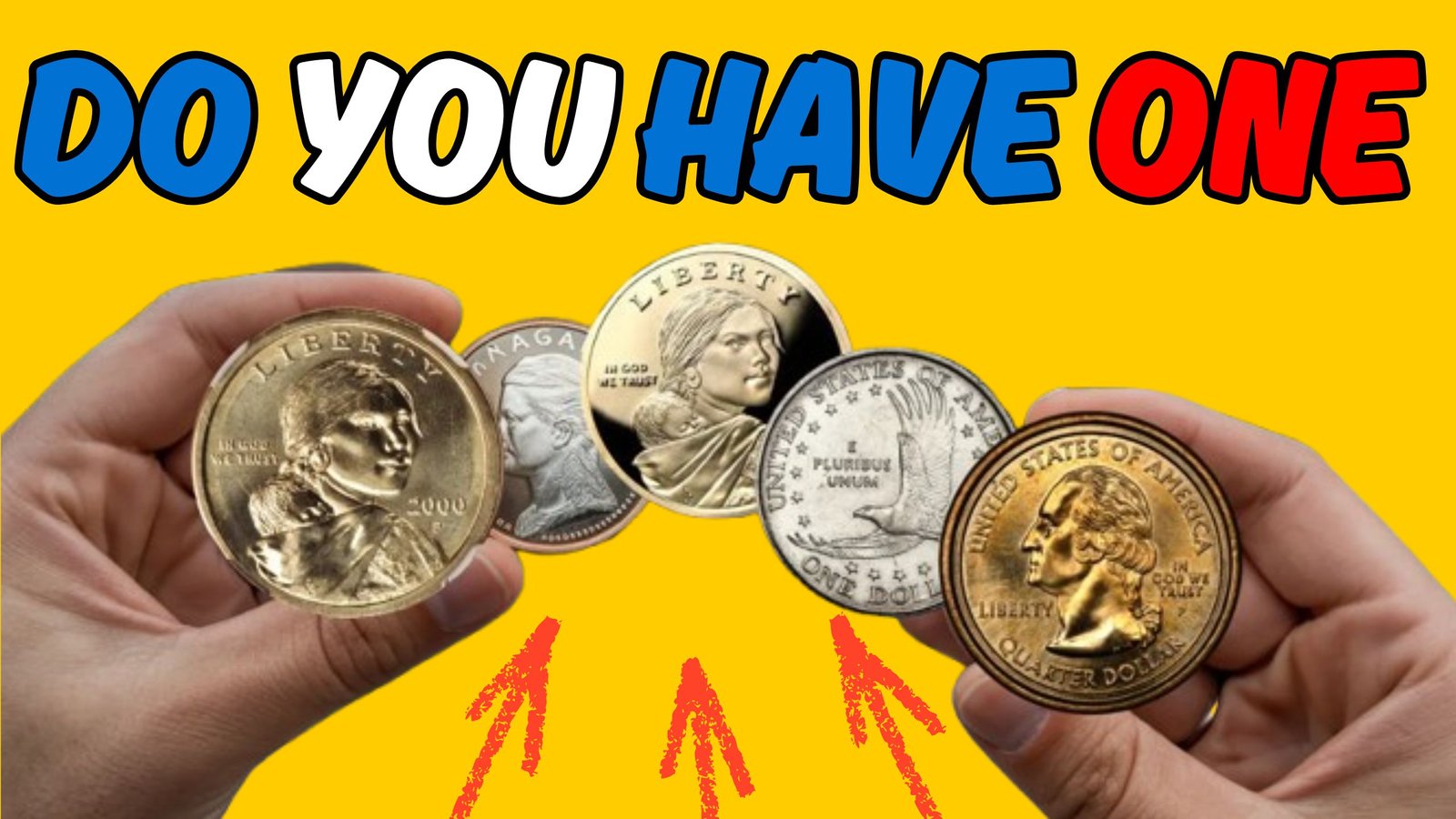5 Sacagawea Coins : For most Americans, Sacagawea dollar coins—first minted in 2000—are often overlooked, relegated to the bottom of change jars or tossed into coin collections without much fanfare. However, among these golden-hued coins are a few rare treasures worth far more than face value. In fact, a handful of Sacagawea dollars have fetched six-figure payouts at auctions and private sales, transforming pocket change into financial windfalls. Here are five extraordinary Sacagawea coins that stunned collectors and turned heads in the numismatic world.
1. 2000-P Sacagawea Dollar / Washington Quarter Mule — Sold for $155,250
One of the most famous minting errors in modern U.S. coinage, this mule coin features the obverse (front) of a Washington state quarter and the reverse (back) of a Sacagawea dollar. Accidentally struck at the Philadelphia Mint, this bizarre pairing defied the norms of coin production and thrilled collectors.
Only about 20 known examples of the 2000-P mule error exist. In 2018, one sold at auction for a staggering $155,250. These coins are highly sought-after due to their rarity, unique appearance, and the intrigue of a minting mistake slipping through quality control.
2. 2000-P “Cheerios” Sacagawea Dollar — Valued at $25,000–$100,000+
In early 2000, General Mills partnered with the U.S. Mint to place 5,500 special Sacagawea dollars in boxes of Cheerios cereal to promote the new coin. These coins were presumed to be standard issues—until a few collectors noticed something unusual.
The “Cheerios” Sacagawea dollars featured a detailed tail feather pattern on the eagle that was not used in the final production version. These prototype reverses—known as the “pattern reverse” or “Cheerios reverse”—make the coin significantly more valuable.
High-grade versions have sold for up to $100,000, making them one of the most coveted modern coins in circulation.
3. 2000-P Sacagawea Dollar Struck on a Quarter Planchet — Sold for $79,312.50
Errors involving the wrong planchet (coin blank) are rare—and when they happen on high-profile coins like the Sacagawea dollar, the value skyrockets.
In this case, a 2000-P Sacagawea dollar was accidentally struck on a quarter-sized planchet, meaning it was too small and missing details. Despite its obvious size anomaly, it made it out of the mint and into the collector market.
At auction, it commanded a final price of $79,312.50, thanks to its unusual origin and pristine condition.
4. 2000-D Sacagawea Dollar “Experimental Rinse” — Valued Up to $50,000
While most coin errors involve stamping or planchet mistakes, the 2000-D “Experimental Rinse” Sacagawea dollars are the result of a chemical treatment.
These coins have a distinctively darker, shinier finish, the result of being dipped in an experimental rinse meant to improve appearance and durability. Though the Mint never confirmed how many were produced, a small number of these coins have been authenticated and are considered extremely rare.
Depending on grade, they can be worth anywhere from $10,000 to $50,000 or more.
5. 2000-P Sacagawea Dollar Mint Error with Off-Center Strike — Sold for $66,000
Coins with an off-center strike—where the design is visibly misaligned—are a classic type of mint error. One such 2000-P Sacagawea dollar had a dramatic 30% off-center strike, making it highly desirable among error collectors.
In mint condition, this coin sold for an astonishing $66,000. The combination of rarity, visual appeal, and historical interest drove intense bidding at auction.
Final Thoughts
While most Sacagawea dollars are only worth a dollar, a tiny fraction hold the potential to change lives—if you’re lucky enough to find one. With mint errors, rare prototypes, and promotional oddities like the Cheerios dollar, these coins prove that treasure can still be found in the most ordinary places.
5 Sacagawea Coins Frequently Asked Questions (FAQs..)
Q1: Why are some Sacagawea coins worth so much?
A: Most Sacagawea coins are worth only face value, but certain rare versions—such as minting errors, limited prototypes, or promotional releases like the “Cheerios” dollar—are highly valuable to collectors due to their rarity, historical significance, or unusual features.
Q2: What is the “Cheerios” Sacagawea dollar?
A: It’s a special 2000-P Sacagawea dollar included in early 2000 Cheerios cereal boxes as a promotional giveaway. Some of these coins were struck with a prototype eagle design on the reverse that differs from the mass-produced version, making them extremely valuable (up to $100,000).
Q3: What is a mule coin, and why is it valuable?
A: A mule coin is a minting error where the obverse and reverse of a coin come from two different coin types. The famous 2000-P Sacagawea dollar mule features a Washington quarter obverse and Sacagawea reverse, a mistake worth over $150,000 due to its extreme rarity.
